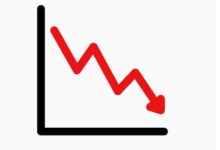RBI monetary policy meeting August 2023: Repo rate to remain at 6.5 percent

The Reserve Bank of India on Thursday decided not to increase the repo rate. That is, the interest rate will remain at 6.50%. RBI has not changed the rates for the third time in a row. RBI Governor Shaktikanta Das informed about the decisions taken in the monetary policy meeting today.
RBI has increased the inflation forecast for FY24 to 5.4% from 5.1%. The RBI governor said that due to the rising prices of vegetables, there is a possibility of an increase in inflation in the months of July and August. At the same time, the estimate of real GDP growth in FY24 has been retained at 6.5%.
Repo rate increased by 2.50% in 6 times in the last financial year
Monetary policy meets every two months. The first meeting of the last financial year-2022-23 was held in April-2022. Then the RBI had kept the repo rate constant at 4%, but on May 2 and 3, the RBI called an emergency meeting and increased the repo rate by 0.40% to 4.40%.
This change in the repo rate took place after 22 May 2020. After this, in the meeting held on 6 to 8 June, the repo rate was increased by 0.50%. This increased the repo rate from 4.40% to 4.90%. Then in August it was increased by 0.50%, taking it to 5.40%.
Interest rates went up to 5.90% in September. Then in December the interest rates reached 6.25%. After this, the last monetary policy meeting for the financial year 2022-23 was held in February, in which interest rates were increased from 6.25% to 6.50%.
RBI has a powerful tool to fight inflation in the form of repo rate. When inflation is very high, RBI tries to reduce the money flow in the economy by increasing the repo rate. If the repo rate is high, the loan that banks get from RBI will be expensive. In return, banks make loans costlier for their customers. This reduces money flow in the economy. If the money flow decreases, then demand decreases and inflation decreases.
Similarly, when the economy goes through a bad phase, there is a need to increase money flow for recovery. In such a situation, RBI reduces the repo rate. Due to this, the loan from RBI becomes cheaper for the banks and the customers also get the loan at a cheaper rate.








